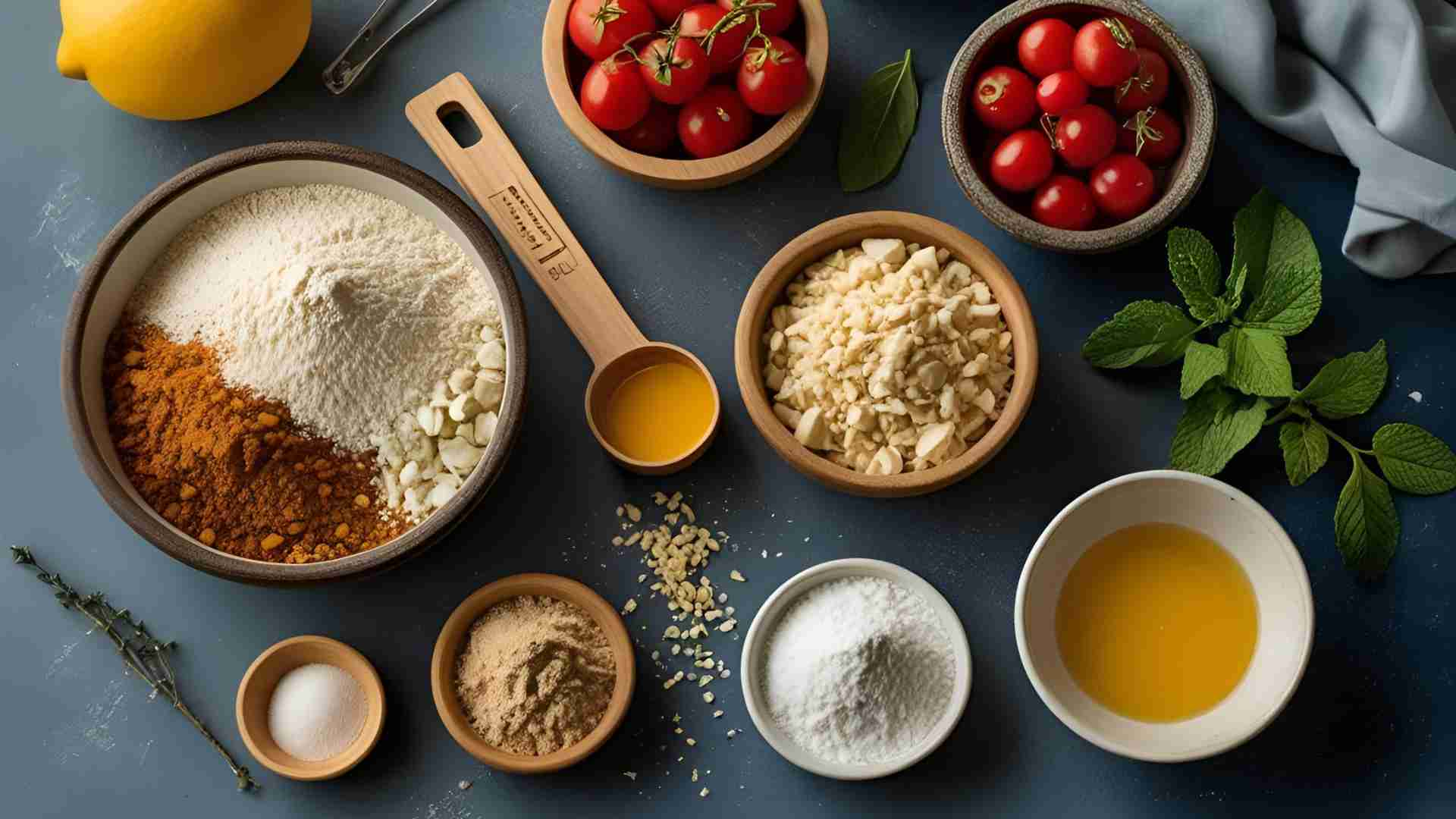The Importance of Measuring Ingredients by Weight for Your Recipes
Learn why measuring ingredients by weight is key to perfect recipes. Boost accuracy, save time, and reduce mess with our guide!
In the culinary world, precision can make or break a dish. Whether you’re whipping up a batch of cookies or crafting a delicate soufflé, the way you measure ingredients significantly impacts the outcome. While volume measurements like cups and teaspoons are common, especially in American kitchens, measuring ingredients by weight—using grams or ounces—offers unmatched accuracy, consistency, and ease. This comprehensive guide explores why weighing ingredients is a game-changer for home cooks and bakers, offering practical tips, conversion strategies, and insights into why professionals swear by this method.
Why Measuring by Weight Matters
Baking is a science, and cooking often demands precision, particularly when scaling recipes or aiming for consistent results. Measuring by weight eliminates the variability inherent in volume measurements, ensuring your dishes turn out as intended every time. Here’s why weight-based measurements are essential:
1. Unparalleled Accuracy and Consistency
Weight measurements are inherently precise. A gram of flour is always a gram, regardless of how it’s scooped or packed. Volume measurements, however, are prone to variation. For instance, a cup of all-purpose flour can weigh anywhere from 4¼ to 5½ ounces depending on how it’s measured—spooned lightly, scooped directly, or packed tightly. This variability can drastically affect the texture and structure of baked goods. A cake made with too much flour due to a tightly packed cup might turn out dense and chewy, while too little flour can result in a flat, gummy mess.
By using a digital scale, you eliminate guesswork. Professional bakers rely on weight measurements because they ensure consistent results, batch after batch. This precision is especially critical in recipes where ingredient ratios are key, such as breads, pastries, and cakes.
2. Simplified Recipe Scaling
Scaling recipes up or down is a breeze with weight measurements. Doubling 175 grams of sugar is as simple as multiplying by two to get 350 grams. Compare that to doubling ¾ cup of sugar, which requires converting to 1½ cups and potentially miscalculating fractions. Weight measurements streamline the process, reducing errors and saving mental energy for the creative aspects of cooking.
3. Reduced Cleanup and Mess
Using a digital scale minimizes the need for multiple measuring cups and spoons, which means fewer dishes to wash. With a scale, you can measure all ingredients directly into a single mixing bowl, often using the tare function to reset the scale to zero after each addition. This not only saves time but also keeps your workspace tidier—no more trails of flour or powdered sugar across the counter.
4. Compatibility with Global Recipes
Many international recipes, particularly from Europe, are written using weight measurements. By mastering this method, you can confidently tackle recipes from around the world without needing to convert units or guess at volume equivalents. This opens up a broader range of culinary possibilities, from French patisserie to Italian artisan breads.
5. Professional-Grade Results
Walk into any professional kitchen, and you’ll likely see chefs using digital scales. This isn’t just a trend—it’s a necessity for achieving consistent, high-quality results. Whether you’re a home cook or aspiring baker, adopting weight measurements elevates your skills to a professional level, ensuring your creations rival those of top chefs.
Weight vs. Volume: Understanding the Difference
To appreciate the benefits of weighing ingredients, it’s important to understand the distinction between weight and volume measurements:
- Volume: Measures the space an ingredient occupies, using tools like cups, teaspoons, or gallons. Examples include a cup of brown sugar or a teaspoon of baking powder. Volume is less precise because it’s affected by factors like packing density, air pockets, and measuring technique.
- Weight: Measures an ingredient’s mass, typically in grams, ounces, or pounds. Examples include 120 grams of flour or 50 grams of an egg. Weight is consistent and unaffected by how the ingredient is handled.
The variability of volume measurements can lead to significant discrepancies. For example, a cup of granulated sugar weighs approximately 198 grams, but the same cup filled with powdered sugar weighs only 113 grams. Assuming all ingredients weigh 8 ounces per cup—a common misconception—can lead to disastrous results.
Common Ingredient Weight Conversions
To illustrate the variability of volume measurements, here’s a table of weight conversions for common pantry staples per 1 cup:
| Ingredient | Volume (1 Cup) | Weight (Ounces) | Weight (Grams) |
|---|---|---|---|
| All-Purpose Flour | 1 cup | 4¼–5 | 120–140 |
| Granulated Sugar | 1 cup | 7 | 198 |
| Powdered Sugar | 1 cup | 4 | 113 |
| Butter | 1 cup | 8 | 227 |
| Chocolate Chips | 1 cup | 6 | 170 |
| Honey | 1 cup | 12 | 340 |
| Maple Syrup | 1 cup | 11 | 312 |
| Peanut Butter | 1 cup | 9½ | 270 |
Note: Flour weights vary slightly depending on the source. For example, King Arthur Flour lists 4¼ ounces per cup, while Cook’s Illustrated uses 5 ounces. Always use the weight specified in the recipe for best results.
For a comprehensive resource, refer to King Arthur Flour’s Ingredient Weight Chart, which provides measurements in both ounces and grams for a wide range of ingredients.
How to Convert Recipes to Weight Measurements
Transitioning from volume to weight measurements is straightforward with the right tools and techniques. Here are three effective methods:
1. Weigh Ingredients Yourself
The most accurate approach is to measure each ingredient using a digital scale and record the weight. For example, to convert a recipe calling for 2 cups of flour, place a bowl on the scale, tare it to zero, and add flour until you reach the desired weight (approximately 240–280 grams, depending on the source). This method is ideal when creating recipes from scratch, as it allows you to document precise measurements.
2. Use Online Conversion Tools
Numerous online tools can convert volume to weight measurements for common ingredients. Websites like King Arthur Flour and recipe plugins often include built-in converters. Simply input the volume measurement, and the tool provides the equivalent weight. This is a quick solution for adapting existing recipes.
3. Manual Conversions with a Calculator
For common ingredients, you can use established conversion rates. Here are some examples for small measurements:
- Baking Powder: 1 teaspoon = 4 grams
- Baking Soda: ½ teaspoon = 3 grams
- Large Egg: 1 egg = 1¾ ounces = 50 grams
For larger quantities, multiply the volume by the ingredient’s weight per unit. For instance, if a recipe calls for 1½ cups of granulated sugar, calculate: 1 cup = 198 grams, so 1½ cups = 1.5 × 198 = 297 grams.
Tips for Weighing Ingredients Like a Pro
To maximize the benefits of measuring by weight, follow these practical tips:
- Use the Tare Function: Place your mixing bowl on the scale and press the tare button to reset to zero. This excludes the bowl’s weight from your measurements. After adding each ingredient, tare again to measure the next one accurately.
- Pour Slowly: Add ingredients gradually to avoid overshooting the target weight. Pour into different sections of the bowl to keep ingredients separate, making it easier to adjust if you add too much.
- Clear the Workspace: Ensure the scale is on a flat, unobstructed surface to prevent inaccurate readings caused by items touching the weighing platform.
- Protect the Scale: For sticky or messy ingredients like honey or raw meat, line the scale with plastic wrap or use a plate, then tare to account for the added weight.
- Use Measuring Spoons for Small Quantities: Digital scales may not accurately measure small amounts (e.g., ½ teaspoon of salt). For these, rely on measuring spoons for precision.
- Follow Recipe-Specific Weights: Different recipes may use slightly different weight conversions for ingredients like flour. Always use the weights provided by the recipe author to match their intended ratios.
Choosing the Right Kitchen Scale
A reliable digital scale is essential for weighing ingredients. Here are key features to look for when selecting a scale:
- Capacity: Choose a scale with at least an 11-pound (5 kg) capacity to handle large batches.
- Units: Ensure it measures in both grams and ounces for versatility.
- Precision: Look for a scale accurate to 1 gram or 0.01 ounces for small measurements.
- Tare Function: A must-have for resetting the scale to zero.
- Display: A clear, easy-to-read display, ideally with a pull-out or backlit feature, is ideal for convenience.
Recommended Scale: OXO Good Grips 11-Pound Stainless Steel Food Scale
- Capacity: 11 pounds (5 kg)
- Units: Grams, ounces, pounds, milliliters
- Features: Pull-out display, tare function, stainless steel platform
- Price: Approximately $50–$60 USD (varies by retailer)
- Why It’s Great: Durable, precise, and user-friendly, with a pull-out display for easy reading even with large bowls.
For budget-conscious cooks, the Escali Primo Digital Scale ($25–$30 USD) offers reliable performance with a 11-pound capacity and measurements in grams and ounces.
Visualizing the Workflow: Measuring by Weight
To illustrate the efficiency of weighing ingredients, consider this workflow for a chocolate cake recipe:

This streamlined process reduces the need for multiple tools and ensures precise measurements, leading to a perfectly textured cake.
Addressing Common Misconceptions
One prevalent myth is that 1 cup always equals 8 ounces for all ingredients. While this holds true for liquids like water and milk, and for butter and sour cream, it’s not universal. For example:
- Flour: 1 cup = 4¼–5 ounces (120–140 grams)
- Honey: 1 cup = 12 ounces (340 grams)
- Powdered Sugar: 1 cup = 4 ounces (113 grams)
Assuming a universal 8-ounce cup can lead to significant errors, especially in baking, where precise ratios are critical.
Why Baking Demands Precision
Baking relies on chemical reactions—leavening agents like baking powder react with liquids and heat to create rise, while flour and sugar balance texture and sweetness. Even a 10-gram discrepancy in flour can alter a cake’s crumb or cause bread to collapse. Weighing ingredients ensures these reactions occur as intended, delivering professional-quality results.
In contrast, cooking often allows for more flexibility. Adjusting seasonings or ingredients on the fly is common in savory dishes, but baking offers no such leeway once the batter hits the oven. A scale is your best tool for nailing the recipe from the start.
Making Recipes Accessible Globally
Including both weight and volume measurements in your recipes makes them accessible to a wider audience. In the United States, volume measurements dominate, but much of the world prefers weights. By providing both, you cater to diverse preferences and ensure clarity for all cooks. For example:
- US Recipe: “1 cup flour, ½ cup sugar”
- Global Recipe: “120 grams flour, 100 grams sugar”
This dual approach enhances the usability of your recipes and aligns with professional standards.
Practical Example: Chocolate Cake Scenario
Imagine you’re baking a chocolate cake that calls for 2½ cups of all-purpose flour. Using volume measurements, the flour’s weight could vary:
- Lightly Spooned: 2½ cups ≈ 300 grams (4¼ ounces per cup)
- Tightly Packed: 2½ cups ≈ 350 grams (5½ ounces per cup)
This 50-gram difference could make the cake dense and tough. By weighing 300 grams of flour directly, you ensure the recipe’s intended texture, avoiding guesswork.
Conclusion
Measuring ingredients by weight is a transformative practice for home cooks and bakers. It offers unmatched precision, simplifies scaling, reduces cleanup, and aligns with professional and international standards. By investing in a reliable digital scale and mastering its use, you’ll elevate your culinary creations, achieving consistent, delicious results every time. Whether you’re baking a birthday cake or experimenting with artisan bread, weighing ingredients is the key to unlocking your kitchen’s full potential. Grab a scale, start weighing, and bake with confidence!
Please share these The Importance of Measuring Ingredients by Weight for Your Recipes with your friends and do a comment below about your feedback.
We will meet you on next article.
Until you can read, The IMG Tag and How it Can Super Power Your Food Blog






